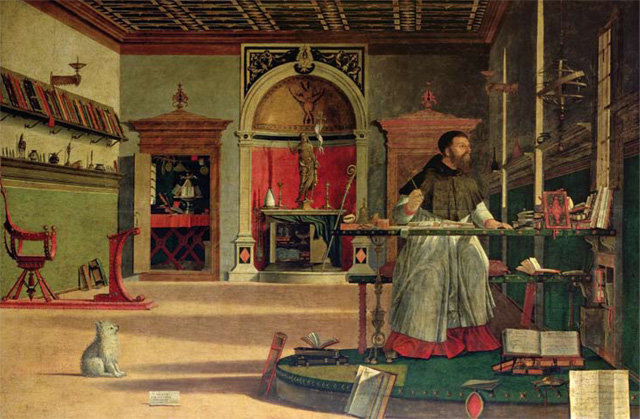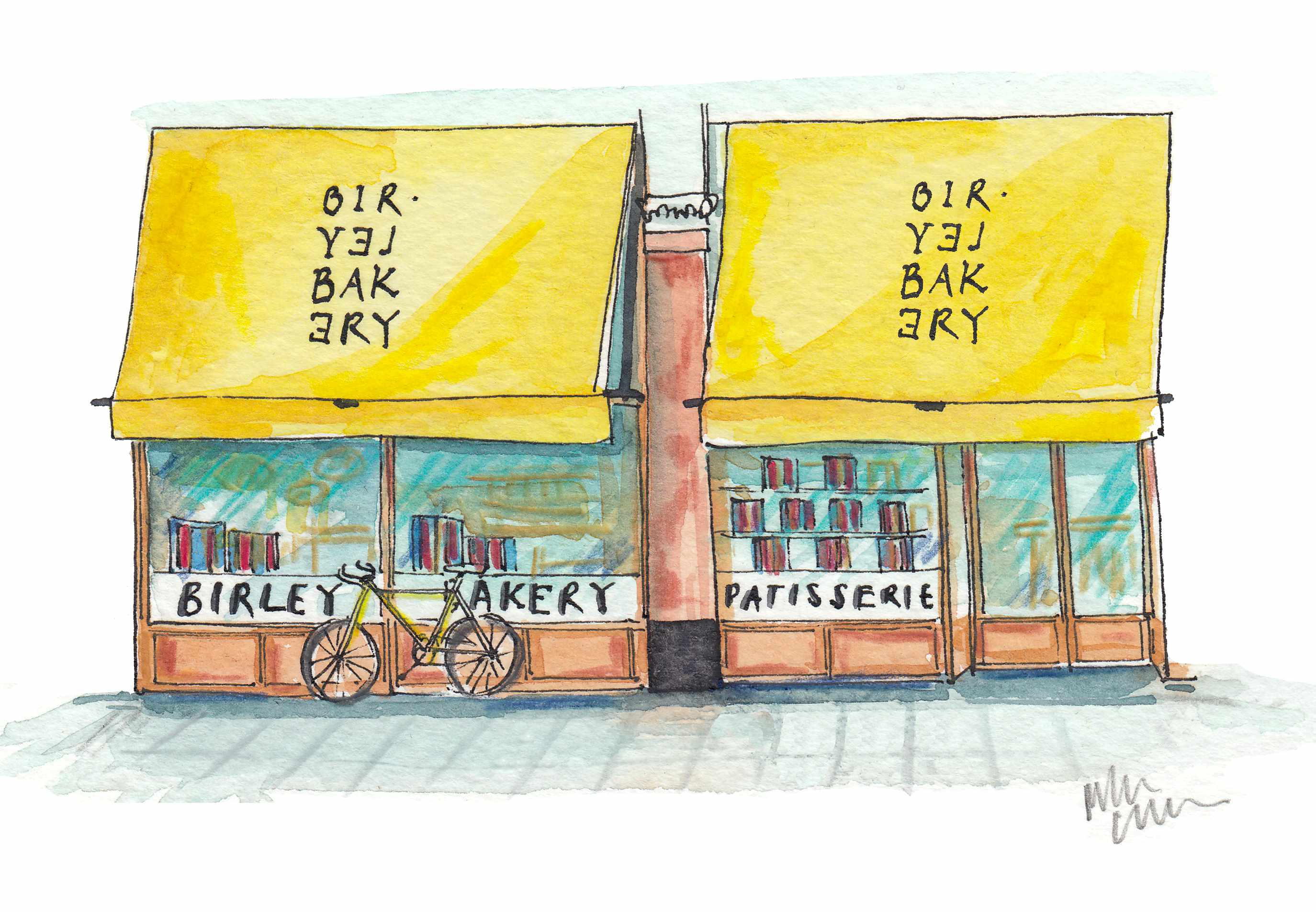My Favourite Painting: Jan Morris
Jan Morris chooses her favourite painting for Country Life.


The Vision of St Augustine 1502–07 by Vittore Carpaccio (1460/5–1523/26) Scuola di San Giorgio degli Schiavoni, Venice. Bridgeman Images.
Jan Morris says: ‘I love this happy picture. I strongly sympathise with the saint, who is evidently racking his brain for an adjective. I love his cheerful study, books and bric-à-brac everywhere, and the little dog dying to get the old boy to go for a walk. No matter that the identity of the sage is disputed– and that the dog was originally meant to be a cat–I love it all anyway!’
Jan Morris is an historian, author and travel writer.
Art critic John McEwen comments: ‘John Stefanidis also selected this cycle (July 1), so suffice to say that the picture can be seen in the old and modest Dalmatian scuole of San Giorgio. Jan Morris’s own Venice and the late J. G. Links’s Venice for Pleasure are classics, and both authors deplore the renaming of the picture as The Vision of St Augustine instead of St Jerome in his Study, following a reinterpretation suggested by Helen J. Roberts in 1959.
She pointed out that a bishop’s mitre and crozier can be seen, and that Jerome, although he was a great doctor of the Church and patron saint of translators, librarians and encyclopaedists, was never a bishop. Also, he is famous for his pet lion, whose undying love he had earned by removing a thorn from one of its paws. ‘Nevertheless,’ writes Links, corroborating the Morris line, ‘I pass over this new attempt by art historians to deprive us of our most cherished traditions with the contempt it deserves.’
In fairness to Roberts, the subject is still Jerome, as it is said to show the story of St Augustine writing to his great contemporary, unaware that at that very moment he had died in Bethlehem. A bright light filled Augustine’s cell and Jerome’s voice reprimanded him for the contents of the letter, which sought Jerome’s opinion about Augustine’s plan to write a tract on the bliss of souls in Paradise. Eternal happiness was beyond the imagining of any mere mortal, said the voice. Thus the picture’s final position in the cycle makes sense, as Jerome’s first supernatural appearance.’
This article was first published in Country Life, September 16, 2009
Sign up for the Country Life Newsletter
Exquisite houses, the beauty of Nature, and how to get the most from your life, straight to your inbox.
Country Life is unlike any other magazine: the only glossy weekly on the newsstand and the only magazine that has been guest-edited by HRH The King not once, but twice. It is a celebration of modern rural life and all its diverse joys and pleasures — that was first published in Queen Victoria's Diamond Jubilee year. Our eclectic mixture of witty and informative content — from the most up-to-date property news and commentary and a coveted glimpse inside some of the UK's best houses and gardens, to gardening, the arts and interior design, written by experts in their field — still cannot be found in print or online, anywhere else.
-
 'That’s the real recipe for creating emotion': Birley Bakery's Vincent Zanardi's consuming passions
'That’s the real recipe for creating emotion': Birley Bakery's Vincent Zanardi's consuming passionsVincent Zanardi reveals the present from his grandfather that he'd never sell and his most memorable meal.
By Rosie Paterson
-
 The Business Class product that spawned a generation of knock-offs: What it’s like to fly in Qatar Airways’ Qsuite cabin
The Business Class product that spawned a generation of knock-offs: What it’s like to fly in Qatar Airways’ Qsuite cabinQatar Airways’ Qsuite cabin has been setting the standard for Business Class travel since it was introduced in 2017.
By Rosie Paterson
-
 My favourite painting: Allan Mallinson
My favourite painting: Allan MallinsonMilitary historian Allan Mallinson picks an image of 'faith, generosity and ultimate sacrifice'.
By Charlotte Mullins
-
 My Favourite Painting: Piet Oudolf
My Favourite Painting: Piet Oudolf'One cannot sense whether he is far out on the ocean or closer to shore, or what he may be watching or feeling in that moment as he stares towards the beach.’
By Country Life
-
 My Favourite Painting: Mary Plazas
My Favourite Painting: Mary Plazas'There is compassion, awe, humility, a knowing yet a questioning in the glistening eyes. It moves me, it inspires me beyond the need to know.’
By Country Life
-
 My favourite painting: Robert Kime
My favourite painting: Robert KimeRobert Kime shares his fondness for New Year Snow by Ravilious
By Country Life
-
 My Favourite Painting: Anna Pavord
My Favourite Painting: Anna PavordAnna Pavord chooses a picture which reminds her of where she grew up
By Country Life
-
 My favourite painting: The Duchess of Wellington
My favourite painting: The Duchess of WellingtonThe Duchess of Wellington chooses her favourite painting for Country Life.
By Country Life
-
 My favourite painting: Maureen Lipman
My favourite painting: Maureen LipmanMaureen Lipman chooses her favourite painting for Country Life.
By Country Life
-
 My favourite painting: Jacqueline Wilson
My favourite painting: Jacqueline Wilson'I looked at this painting and decided to write about a Victorian circus girl one day'
By Country Life